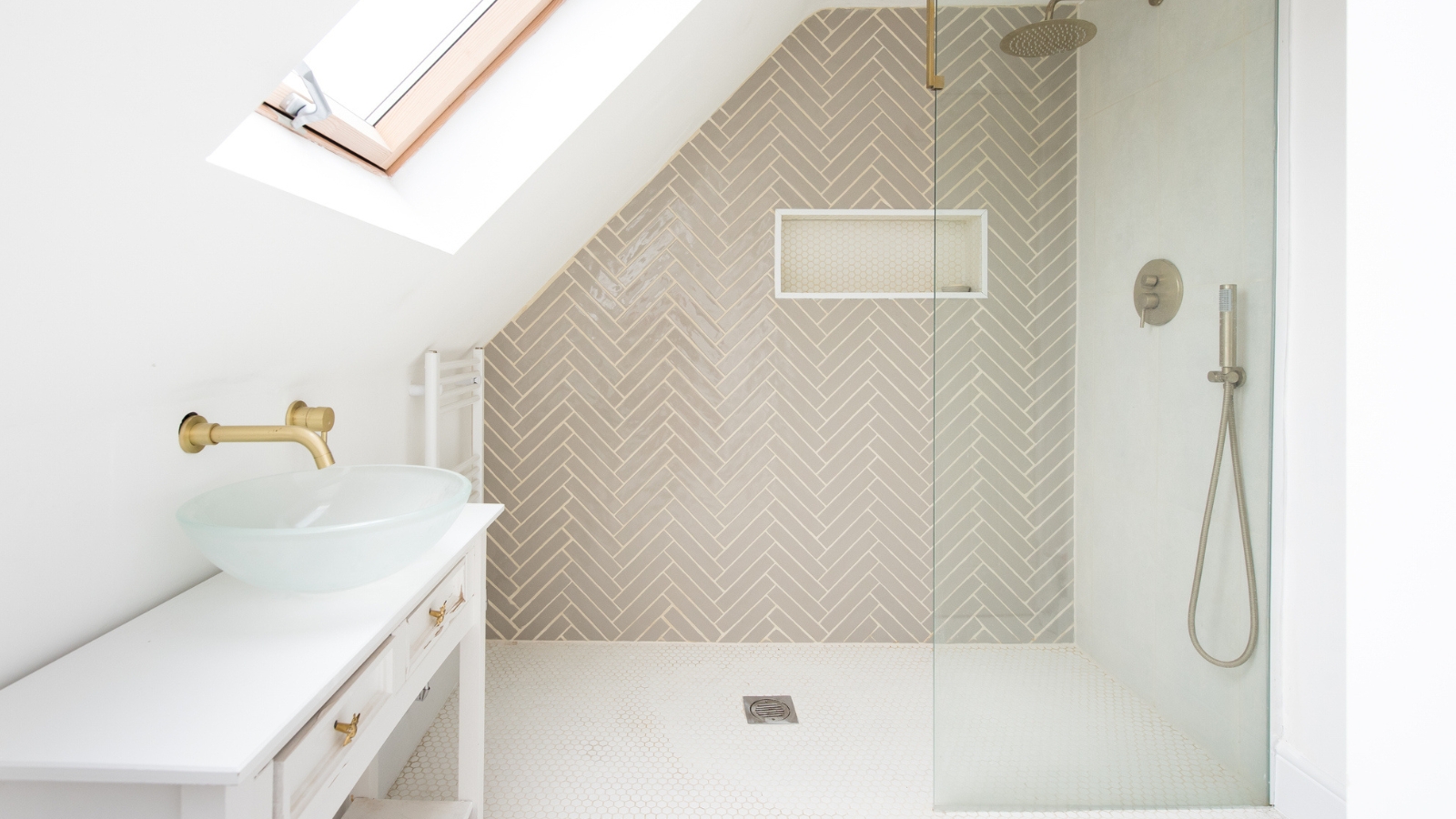
When you need new tiles in your home it's decision time. Porcelain vs ceramic are two common choices that will work well in most areas.
But which type of tile you'll want will depend on different factors. Are you looking to tile walls, floors or even something else? Our interior designers and building contractors share their insight to help you decide the right fit for your project.
Delve into our guide on how each type of tile can transform a space in your home, the differences, pros and cons of each.
Porcelain vs ceramic tiles
Choosing between the two can come down on something as simple as the finish. Can you get the tile you want in porcelain? Or does the tile you love only come in ceramic.
It could also be a practical reason, such as a particular look or property working well for your kitchen idea. If you have decided to install tiles on a DIY basis, ceramic wall tiles are definitely a good choice to start with as they are much easier to work with than porcelain.
What are the key differences between porcelain and ceramic tiles?
The key difference between porcelain and ceramic tiles lies in what they are made of and the firing process which helps give each their unique properties.
Nikki Kelly, interior designer at Lamont Bros explains, ‘Porcelain is a tightly packed mixture of white clay, sand and feldspar, whereas ceramic tiles typically consist of clay only. Porcelain tile is a denser material making it more durable, allowing much larger sizes to be manufactured.’
Jay Sanders Owner at Castle Walls Basement Waterproofing adds, ‘Generally speaking, ceramic tiles are glazed, while porcelain can be glazed or unglazed.’ While Kelly mentions that, ‘Porcelain tiles can have more graphical finishes that mimic other materials’ like these Storm Porcelain Stone Look Singular Tile from Wayfair.
But what about sizes? Sanders says, ‘Both are available in various sizes, but porcelain offers more options.’ Kelly adds that, ‘While ceramic tiles typically come in an array of shapes and sizes, they tend to max out between 10-15 inches.’
Pros and cons for porcelain tiles
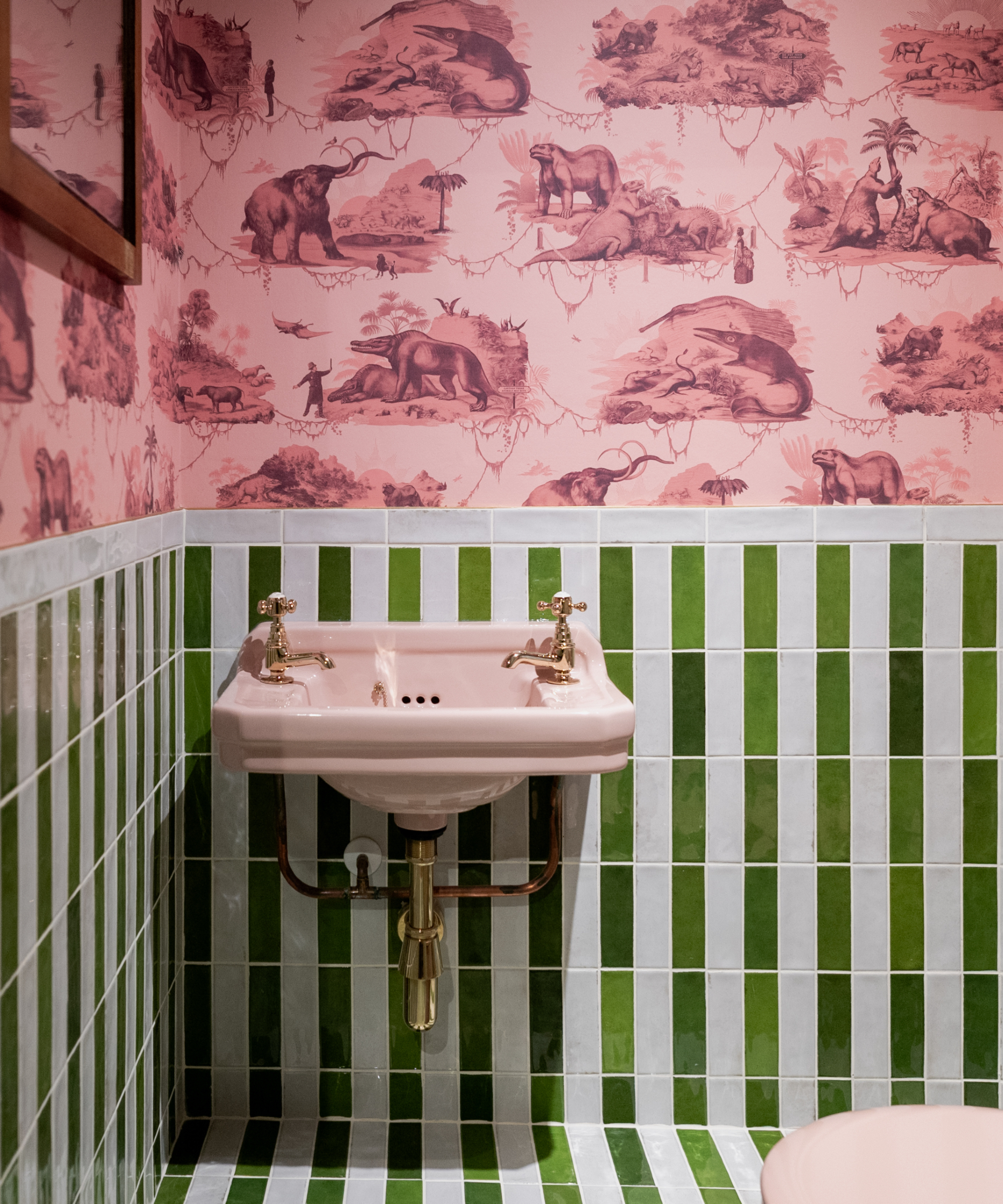
- + Easy to maintain: Porcelain tiles are resistant to general wear and tear, scratches and chips. Though they will need regular cleaning to be kept in good condition. Our cleaning tips will come in handy.
- + Durable: Porcelain tiles have a denser composition than a ceramic tile and a high firing temperature which gives them higher durability.
- + Water resistant: They have a non-porous surface which makes them an ideal choice for areas with high levels of moisture such as a bathroom.
- + Design choices: Porcelain tiles can be found in a wide variety of colors and designs giving plenty of options to choose from.
- - Cold: Porcelain tiles are not great at retaining heat which means they can feel cold under foot, especially in cold climates. But on the other hand, they will feel cool in warmer climates.
- - Slippery: When wet, porcelain can be slippery under foot, especially tiles with a gloss finish. Treat with a specialist anti-slip coating or choose a textured finish for spaces prone to moisture, such as bathrooms.
Pros and cons of ceramic tiles
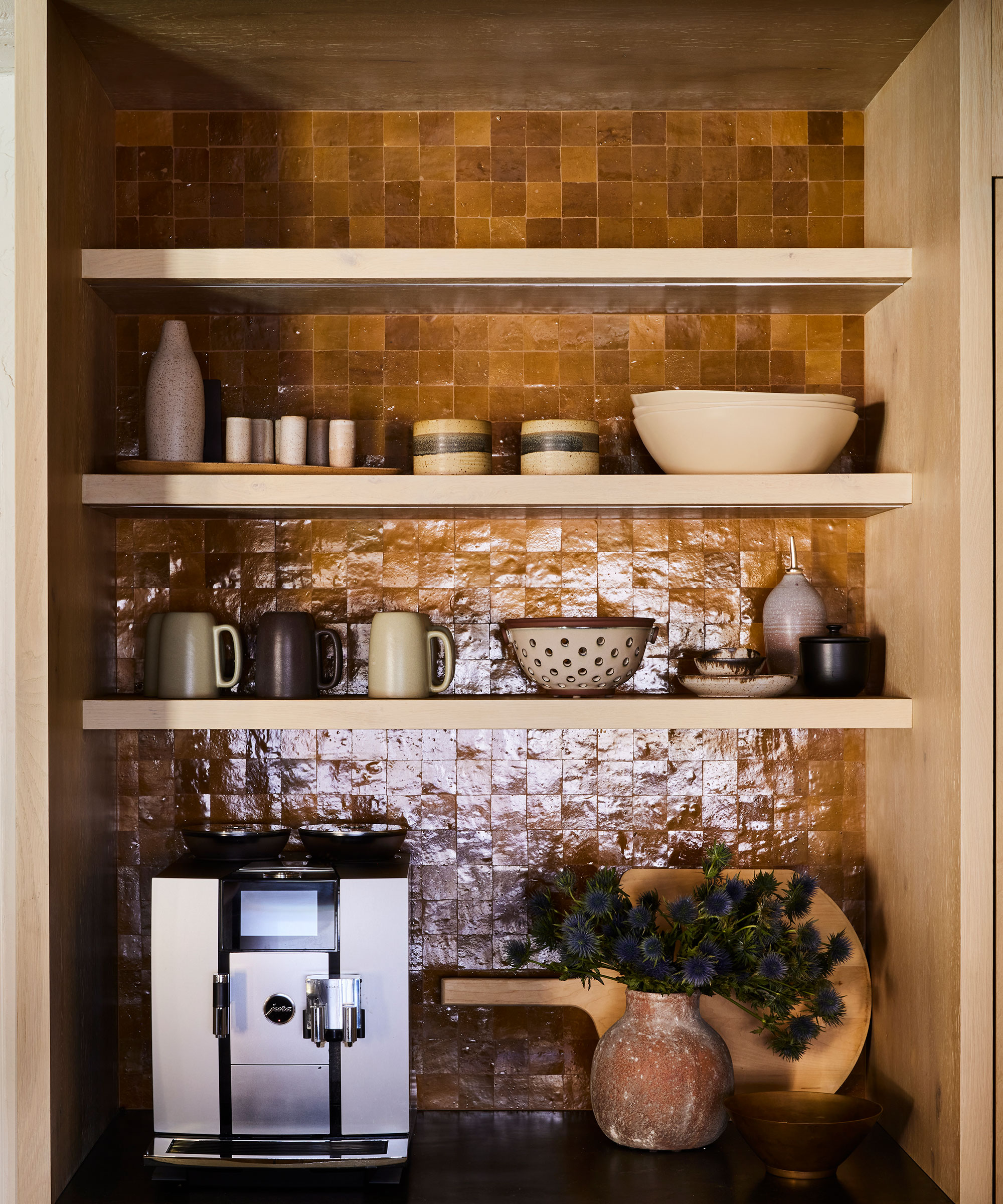
- + Variety: Ceramic tiles come in a wide variety of finishes, colors, patterns and decorative designs, often offering something unique and something to suit all tastes.
- + Easy to clean: With a highly-glazed finish, ceramic tiles resist dirt and stains and are easy to wipe clean with water or everyday cleaning products.
- + Cost: Ceramic tiles are typically less expensive than porcelain tiles especially at the lower end of the price range.
- - Slippy: If you are using ceramic tiles on floors water will pool on the surface and can be slippery. Use a specialist non-slip coating or suitable mats to walk on.
- - Less durable: Ceramic tiles are typically not as durable or strong as porcelain tiles and are more likely to be damaged, especially on floors. Delve into bathroom wall tile ideas for inspiration.
Where can I use porcelain tiles?
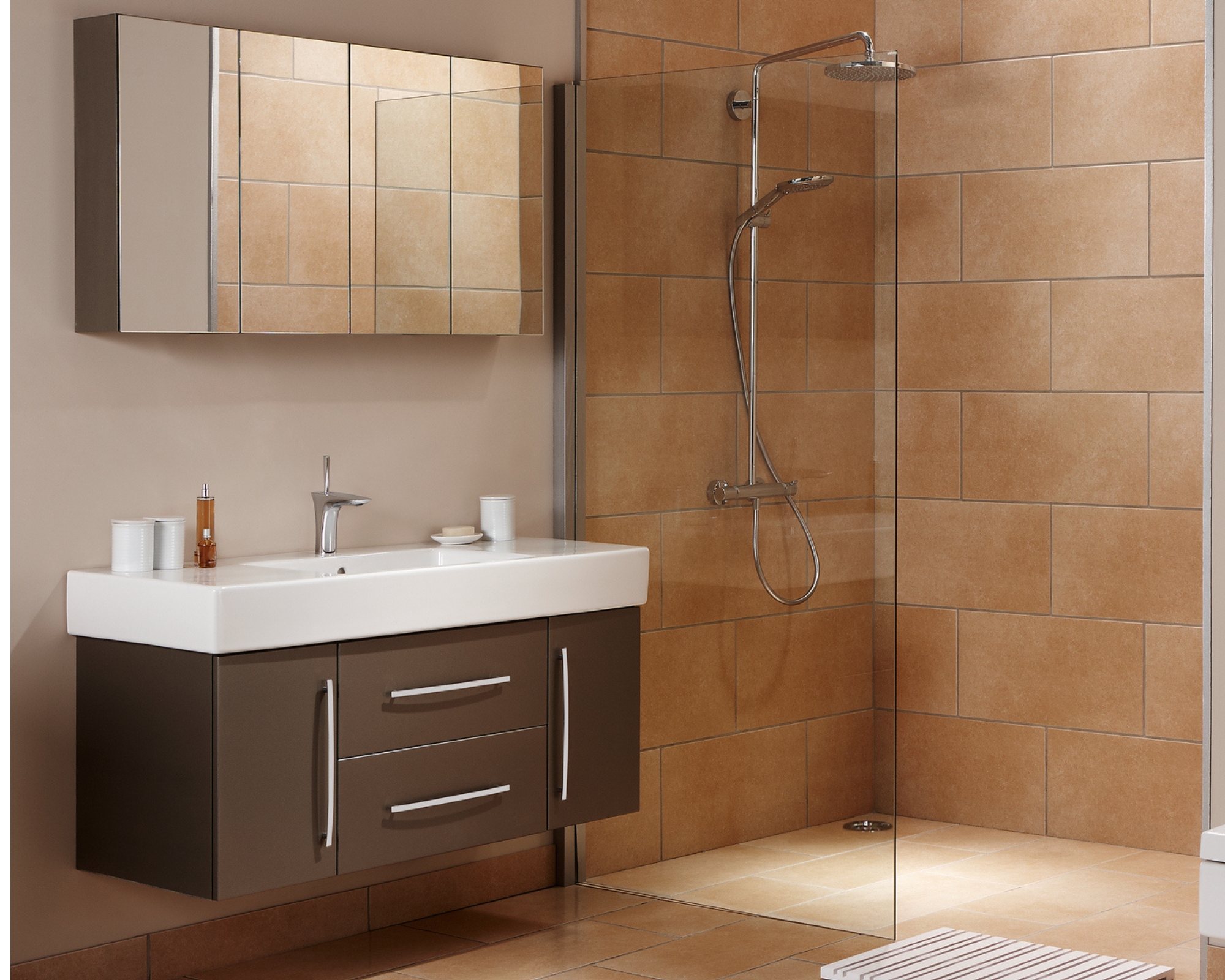
Porcelain tiles are a versatile. Kelly says, ‘Porcelain tile can be used just about anywhere as long as it's appropriately rated for the application, including floors, walls, exterior applications, and even large slabs that are installed as countertops.’
Dave Marrs, national contractor for Re-Bath adds, ‘Porcelain is great for flooring in high-traffic areas because of its durability and scratch-resistance. It’s also extremely non-porous and water resistant, making it perfect for showers, wet areas and bathrooms.’
But you also need to think about what surfaces can be applied to, Sanders suggests, ‘Plaster, brick, and drywall are surfaces which porcelain tiles may be applied to.’
But you will also need to consider if they are going on to a floor or wall and the weight of the tiles. Will your sub floor, especially upstairs sub floors, be able to hold the weight? The same applies to walls, are they the right size? If too large (typically meaning heavy) the wall substrate may not be able to support the tiles. Check with a contractor who will be able to help.
Where can I use ceramic tiles?
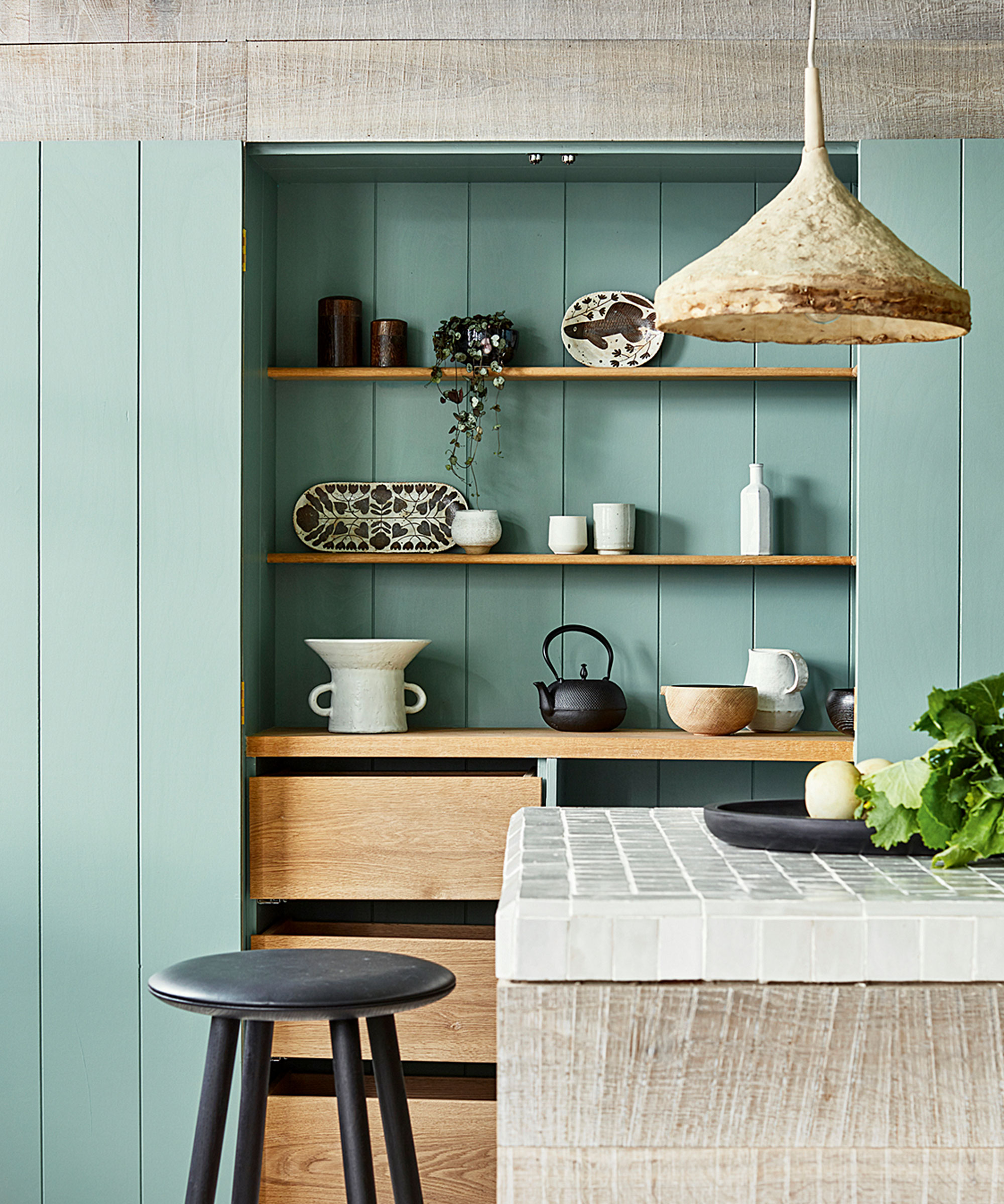
Ceramic tiles are not quite as versatile as porcelain tiles and are a popular choice for walls and certain rooms in the home as Sanders shares, ‘Ceramic tiles are mostly used in both bathrooms and kitchens. They can be easily applied to plaster, brick, or plasterboard.'
They are a good choice for DIYers who know how to install wall tiles. Sanders adds, ‘Ceramic tiles are particularly good for DIY work as they can easily be cut and installed by non-professionals.’
The DIY approach typically applies to wall tiles as Kelly shares, ‘Ceramic tile being a softer material is more limited in where it can be installed, typically walls and countertops with occasional floor options in smaller formats, think 4x4" or smaller.’
FAQs
Is porcelain tile more expensive than ceramic?
As a general guide, porcelain tiles are more expensive than ceramics tiles due to their more intensive manufacturing process. But there are a lot of factors to consider that can change the price for either. Size, type (wall or floor), style, color, brand, design, and finish all have a bearing on the price.
At the lower end of the price scale you often find ceramic tiles like these 4x4 White Glossy Finish Ceramic Subway Tiles from Amazon, for less than a dollar a piece. The popular metro style tiles like these Tenedos White 4x10 Ceramic Subway Wall Tile (also from Amazon), cost more, but again are still relatively inexpensive.
But at the other end of the scale you can purchase a more decorative style like this Bouquet of Rose on The Forest Floor Tile Mural Kitchen/Bathroom Wall Backsplash from Amazon, which costs a lot more than a basic tile.
But you can also find porcelain tiles at the lower end of the price scale. We suggest you head to your local tile supplier or hardware store and see what they have to offer and see if they have any sales happening. You can often find a great deal.
Should you use porcelain or ceramic tile in a shower?
Kelly simply states, ‘Porcelain.’ Porcelain tiles are denser than ceramic tiles which helps give them a non-porous surface that helps repel water better and reduce the risk of common household leaks.
Porcelain tiles are an ideal choice for floors, as well as wet areas as Sanders shares, ‘The better option is porcelain for floors. You can also choose textured or matte finish porcelain tiles to provide more slip resistance to wet areas.’
A common combination to use in showers and bathrooms is to use porcelain tiles on the floor and ceramic tiles on the walls.
Which tile typically lasts longer? Porcelain or ceramic?
Sanders shares that Porcelain is the longer lasting option, ‘By nature and quality, porcelain tends to be more durable, usually surviving much longer when compared to ceramic.’ He adds, ‘Porcelain also bears a higher scratch and wear resistance than ceramic.’
But what can you do to help make sure that your tiles last longer? Sanders says, ‘To extend the life of your tiles, apply a quality sealant and clean them on a regular basis with pH-neutral cleaners. On average, porcelain tiles will last 50 years, while ceramic tiles may last about 20 years.’
Are you looking for new tiles but not quite sure what you want? Then check out our where to buy kitchen tiles, kitchen tiles trends and tile ideas guides for some serious know-how and inspiration.







